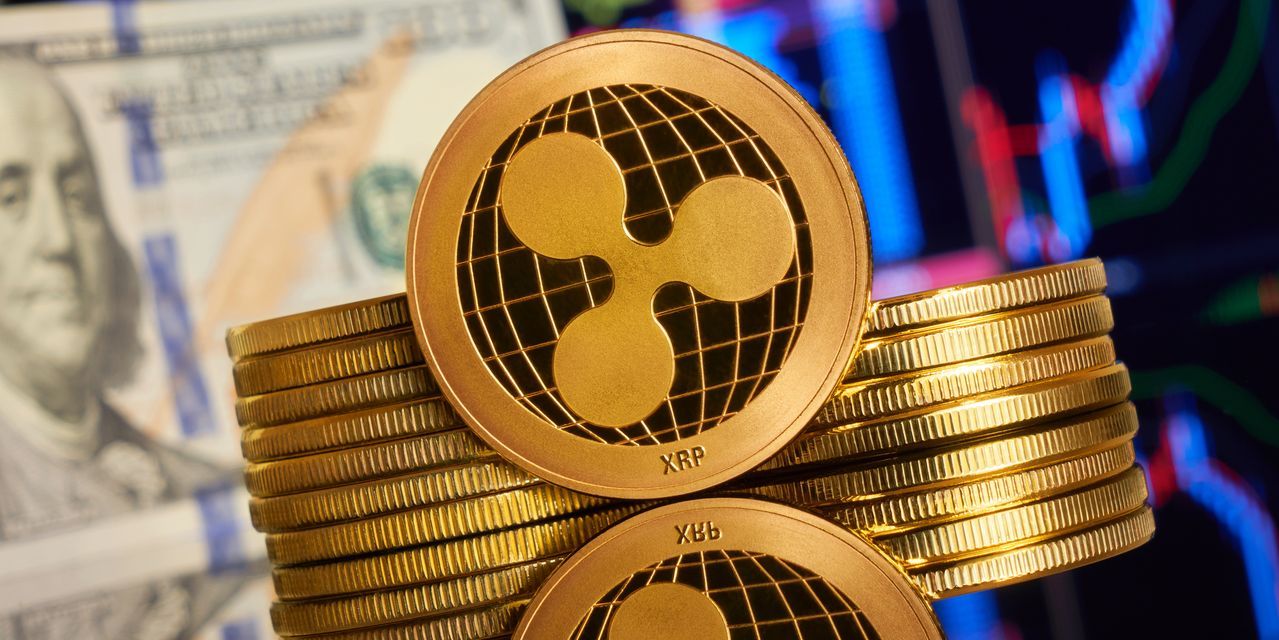XRP Cryptocurrency: A Detailed Overview

Table of Contents
Understanding XRP and its Relationship with Ripple
Ripple Labs is a technology company that developed RippleNet, a global payment network, and XRP, the cryptocurrency designed to function within that network. It's crucial to understand the distinction: Ripple is the company; XRP is the digital asset. RippleNet utilizes XRP as a bridge currency, enabling faster and cheaper cross-border transactions between different financial institutions. This speeds up the process significantly compared to traditional methods which often involve multiple intermediaries and delays.
- RippleNet's global reach and partnerships: RippleNet boasts a wide network of financial institutions, banks, and payment providers worldwide, facilitating seamless transactions across borders.
- XRP's role as a bridge currency: XRP acts as an intermediary, converting one currency into another efficiently, thereby reducing transaction times and costs.
- Advantages of using XRP for faster and cheaper payments: Transactions using XRP are significantly faster and less expensive than traditional methods, making it an attractive option for businesses and individuals.
Technical Aspects of XRP
XRP utilizes a unique consensus mechanism called the Ripple Protocol Consensus Algorithm (RPCA), a more energy-efficient alternative to Proof-of-Work or Proof-of-Stake. Its blockchain technology is designed for speed and scalability, processing thousands of transactions per second. This makes it a potentially superior solution to cryptocurrencies like Bitcoin and Ethereum, which often struggle with transaction congestion.
- Comparison of XRP's transaction speed: XRP boasts significantly faster transaction speeds than Bitcoin and Ethereum, processing transactions in a matter of seconds.
- Explanation of XRP's low transaction fees: The fees associated with XRP transactions are considerably lower than those of other major cryptocurrencies.
- The energy efficiency of XRP's consensus mechanism: RPCA is designed to be significantly more energy-efficient than other consensus mechanisms, addressing environmental concerns associated with some cryptocurrencies.
Use Cases for XRP
The primary use case for XRP is facilitating cross-border payments, offering a faster, cheaper, and more efficient alternative to traditional banking systems. However, its potential applications extend far beyond this core functionality.
- Examples of businesses already utilizing XRP: Several businesses already leverage XRP for international remittances, taking advantage of its speed and efficiency.
- Potential use cases in supply chain finance and micropayments: XRP's low transaction fees make it suitable for supply chain finance and micropayment applications.
- Exploration of DeFi projects built on XRP's ledger: The XRP Ledger is also seeing increasing use within the decentralized finance (DeFi) space, enabling new applications and opportunities.
XRP's Market Position and Volatility
XRP holds a significant market capitalization, consistently ranking among the top cryptocurrencies by market value. However, like all cryptocurrencies, XRP exhibits price volatility influenced by various factors, including regulatory developments, market sentiment, and technological advancements.
- Historical price charts and analysis: Analyzing XRP's historical price charts provides valuable insights into its price fluctuations and patterns.
- Impact of regulatory developments on XRP's price: Regulatory announcements and legal proceedings can significantly impact XRP's price.
- Comparison of XRP's volatility with Bitcoin and Ethereum: While XRP's volatility is inherent, it's important to compare its price swings to those of other major cryptocurrencies like Bitcoin and Ethereum.
Regulatory Landscape and Legal Considerations
The ongoing legal battle between Ripple and the Securities and Exchange Commission (SEC) significantly impacts XRP's adoption and market sentiment. This highlights the importance of understanding the regulatory environment before investing in any cryptocurrency.
- Summary of the SEC lawsuit against Ripple: The SEC lawsuit alleges that XRP is an unregistered security, creating uncertainty for investors.
- Potential outcomes and their impact on XRP’s future: The outcome of the lawsuit will likely have a substantial impact on XRP's future trajectory.
- Importance of conducting thorough due diligence: Before investing in XRP or any other cryptocurrency, conducting thorough due diligence, including understanding the regulatory landscape, is crucial.
Conclusion
XRP, despite facing regulatory challenges, remains a significant cryptocurrency with a unique focus on streamlining global payments. Its technological advantages—speed, low costs, and energy efficiency—position it as a potential disruptor in the financial industry. However, investors must carefully weigh the inherent volatility and regulatory uncertainties. Before investing in XRP cryptocurrency, thorough research and understanding of the risks involved are paramount. Learn more about the potential of XRP cryptocurrency and its role in the evolving landscape of digital finance.

Featured Posts
-
 Is This Xrps Big Moment Etf Approvals Sec Developments And Market Impact
May 01, 2025
Is This Xrps Big Moment Etf Approvals Sec Developments And Market Impact
May 01, 2025 -
 On N Est Pas Stresse 8000 Km A Velo Pour Trois Jeunes Du Bocage Ornais
May 01, 2025
On N Est Pas Stresse 8000 Km A Velo Pour Trois Jeunes Du Bocage Ornais
May 01, 2025 -
 Bartlett Texas Fire Leaves Two Structures As Total Losses Under Red Flag Conditions
May 01, 2025
Bartlett Texas Fire Leaves Two Structures As Total Losses Under Red Flag Conditions
May 01, 2025 -
 Earn 1 500 In Flight Credits Selling Paul Gauguin Cruises With Ponant
May 01, 2025
Earn 1 500 In Flight Credits Selling Paul Gauguin Cruises With Ponant
May 01, 2025 -
 Nikki Burdines Departure From Nashvilles News 2 Morning Show Confirmed
May 01, 2025
Nikki Burdines Departure From Nashvilles News 2 Morning Show Confirmed
May 01, 2025
Latest Posts
-
 Dallas Mourns Passing Of 100 Year Old Star
May 01, 2025
Dallas Mourns Passing Of 100 Year Old Star
May 01, 2025 -
 Death Of A Dallas Star 80s Soap Opera Mourns Another Loss
May 01, 2025
Death Of A Dallas Star 80s Soap Opera Mourns Another Loss
May 01, 2025 -
 Death Of Beloved Dallas Star At 100
May 01, 2025
Death Of Beloved Dallas Star At 100
May 01, 2025 -
 Another Dallas Star Passes Remembering The Icons Of 80s Tv
May 01, 2025
Another Dallas Star Passes Remembering The Icons Of 80s Tv
May 01, 2025 -
 Centennial Celebration Ends Dallas Icon Passes
May 01, 2025
Centennial Celebration Ends Dallas Icon Passes
May 01, 2025
